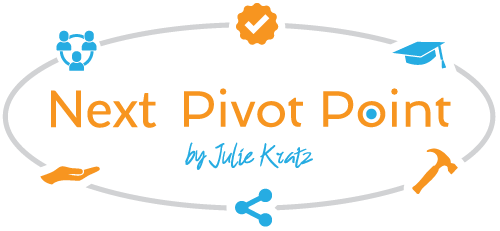Build an Allyship Program Unique To Your Organization’s Culture
Research shows that in organizations where allyship is a priority, employees are 50% less likely to leave and are 56% more likely to improve their performance. Innovation rates, revenue rates and profitability rates are higher for these allyship-focused organizations. Allyship programs help organizations provide a platform to empower individuals from dominant groups to actively support and advocate for those from historically marginalized groups.
Allyship programs are not a one-size-fits-all, they are unique to the organization’s culture. Often, allyship programs promote education and awareness, focus on increasing empathy and understanding. The goal of an effective allyship program is to create and sustain a culture of inclusion and to foster a sense of belonging for all employees. A diverse and inclusive workplace, where everyone feels seen, heard and respected encourages collaboration and unlocks diverse perspectives, leading to greater innovation and problem-solving.
Allies also personally grow and develop through participating in allyship programs. Engaging in allyship can be a rewarding experience, leading to personal growth, increased awareness and a stronger sense of purpose. Allies expand their networks and perspectives through building relationships with people from different backgrounds and lived experiences, helping them be more relevant to future employee, marketplace and customer needs.
To build an effective allyship program, consider these five steps
- Research
- Plan
- Build
- Measure
- Tweak & Repeat
Step One: Research
In the research phase, it is important to get input from potential allies and think about the objectives for the program. Leaders should ask questions to gather skill gaps, learning format and success measures:
- What are some ideas our organization could do to create a more inclusive environment for people of all identities?
- Rank specific skill gaps related to allyship at our organization: empathy, perspective taking, curiosity, cultural intelligence, unconscious bias, candid conversations, inclusive language, psychological safety, microaggressions, growth mindset, etc.
- What groups have the biggest need for these skills?
- What learning format (time, place, frequency) best works with these groups?
- What will be most critical to the success of our organization’s allyship program?
Step Two: Plan
The planning phase is where leaders decide the budget, logistics and format to best meet the needs of potential allies from the information gathered in the research phase. Leaders need to reflect on these key questions:
- What is the budget for the program?
- Is the program voluntary or mandatory?
- Is there an application process for the program?
- Will there be ally pairings (mentors, sponsors, etc.)?
- Who is the target audience(s)?
- How will we communicate about the plan/program to our target audience?
- What are the target audience’s skill gaps?
- Who is accountable for the success of the program?
- How will those accountable and in the program have time to manage and fully participate in the program?
- How will program managers/leaders be recognized for their time and efforts to run the program?
- How will we know if the program is successful?
- Who will sponsor the program (senior leadership)?
- What format is best to reach the target audience (virtual, in-person, e-learning, video, communications, timing)?
- How interactive will the program be (chat, polling, small group discussions, coaching sessions)?
Step Three: Build
This phase is where the action happens. The set of activities in the program is delivered and potential allies become allies in training. Key decisions are made about:
- Format
- Facilitators
- Learning objectives
- Resources between session
- Community sharing
- Pre and post assessments
- Feedback
Step Four: Measure
Measurement is vital to the long-term success of an allyship program. The program needs to tell the story of how it impacted the organization positively with real data. The data can be captured through surveys, listening sessions or anecdotally answering questions like:
- How likely are you to recommend this program to a friend or colleague?
- What is the most important reason for your score?
- Did the programming meet your expectations? Please explain.
- What was your favorite part of the program?
- What parts of our program would you like to see improved?
- How has this program helped you in your day-to-day job and career?
- If we were to offer other programs/session topics, what would you like to see?
- Are there people you would like to nominate or suggest to be included in future allyship programming?
- Would you be willing to provide a testimonial?
Step Five: Tweak & Repeat
Allyship programs are only as successful as participants feel they are. It is important to take feedback from participants to continuously improve the program for long-term success. I recommend you:
- Summarize feedback from the post-program assessment and pre and post knowledge checks into top themes (pro-tip use AI to help summarize data)
- Share program metrics with senior leadership
- Prioritize critical modifications to the program based on ease of implementation and impact to the organization
Allyship programs drive workplace inclusion. If your organization wants to be more inclusive, allyship programs are clearly an opportunity. Next Pivot Point offers custom solutions and education programs to help you build an allyship program that works for your organization. Schedule some time with our team today to discuss next steps.

